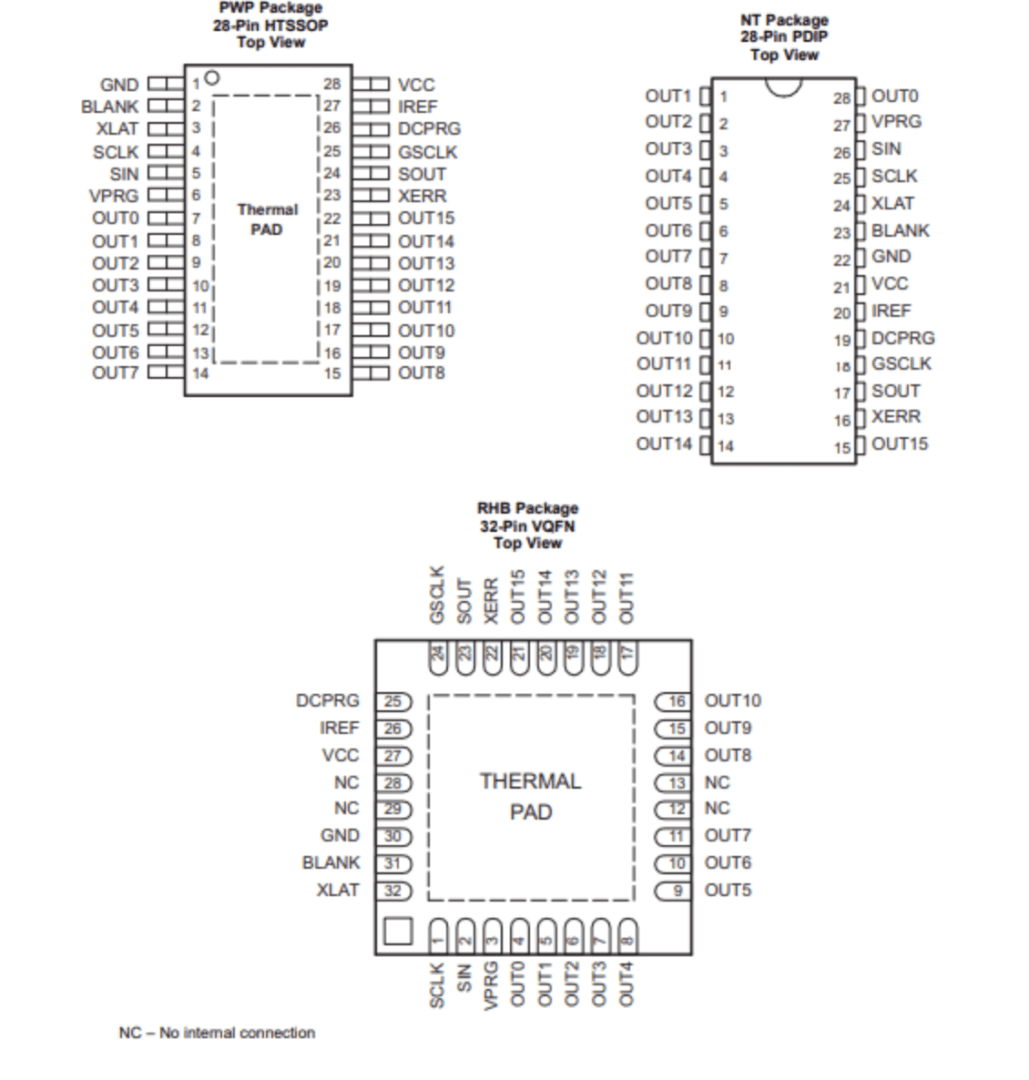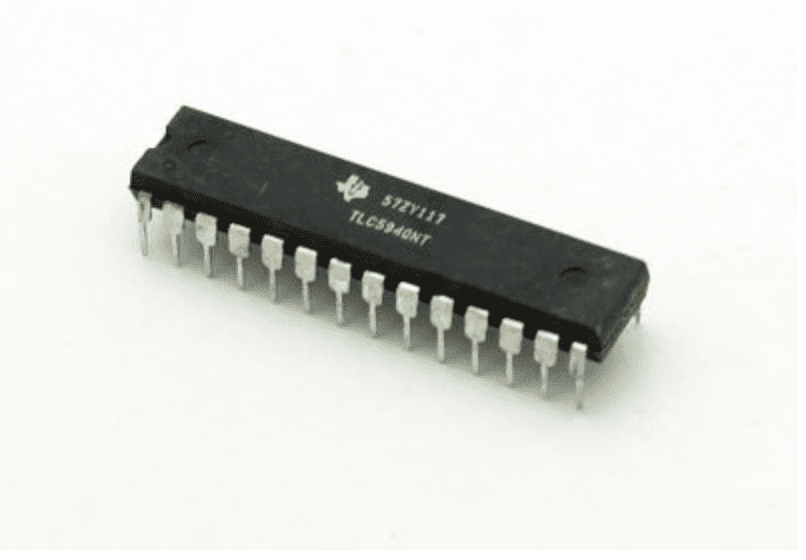
The TLC5940 is an electronic component optimized for handling current flow and heat dissipation in LEDs. It has multiple variants in different shapes and sizes. The TLC5940 regulates current across multiple LED channels to prevent variable brightness or overheating. There are many variants of this component available from different manufacturers, but its standard characteristics are captured in publicly accessible datasheets.
The TLC5940 Datasheet
According to its datasheet, the TLC5940 contains 16 channels regulating current flow and heat dissipation between its own LED channels to other LED drivers. An external resistor controls the amount of current allowed within all of the component’s channels. The output current per channel must be between 5 mA and 120 mA. LEDs connected to this component can handle either DC or AC current. Regardless of the current type, the TLC5940 functions at 3 to 5.5V, so it is not considered a high voltage component. 3 pins are required for device input, and the rest can be connected to LEDs or other components. A TLC5940 can mix and match multiple types of LEDs, including mono-color and multicolor.
Although most pins are for output current and devices, many pins on the TLC5940 have special functions. These functions include turning off all connected LEDs, serializing components, and handling voltage from the power supply. Depending on the component variant, some pins have no connection to the internal circuits. Since the TLC5940 is surface mounted, the non-functional pins keep the component balanced in 3 dimensions.
Every output channel in the TLC5940 can be configured individually, both for brightness and stability. This ensures LEDs of different colors and brightness can be controlled from a single component. Fluctuations are controlled by two different processes; color and intensity are controlled by a 4096-step process translating into grayscale, while a 64-step process of dot correction smooths out any flickers caused by unexpected current changes.
Considerations When Using the TLC5940
The TLC5940 has the ability to alert users to multiple different errors in its operation. It does this through error information circuits. Information about the circuits can be accessed through its serial interface. The first error is LED open detection (LOD), which indicates a broken or disconnected LED on an output circuit. Fixing this error is straightforward: replace the malfunctioning or missing LED. The second error is the thermal error flag (TEF). This error is potentially more difficult to fix, since repeated overheating can cause the TLC5940 to fail prematurely. However, allowing the component to cool is usually enough to fix this error.
Multiple TLC5940 components can be serialized to control larger groups of LEDs at once. A TLC5940 has two specific pins: the serial in and serial out pins—which can be connected together. Each serialized component must be independently powered and grounded. When TLC5940s are connected in series, the first component in the series controls all other components in the series. For example, activating the pin which turns off all LEDs connected to the component will turn off all LEDs connected to the entire series of components.
Many advanced features of the TLC5940—such as the serial interface—can only be accessed in grayscale mode. Grayscale mode also allows access to an internal data packet containing status information for the component’s various parts. This packet is highly structured so any errors can be easily identified. Grayscale mode is useful for testing the functionality of the TLC5940 and its connected devices.

Choosing a TLC5940
Since the functionality of TLC variants are so similar, the biggest factor for many designers is the component’s size. All variants of TLC5940 can be linked in series with equal efficiency. The datasheet does not focus on any specific variant of the TLC5940, except to point out the non-functional pins on the smallest size. Different sizes and shapes can be serialized if necessary, so a variant’s cost is the most likely driving factor in choosing a TLC5940.

Ultra Librarian provides multiple TLC5940 variants for designers—enabling them to choose the most precise component for their project. Working with Ultra Librarian takes the guesswork out of preparing for your next great device, and puts your ideas on the road to success. Register today for free!








